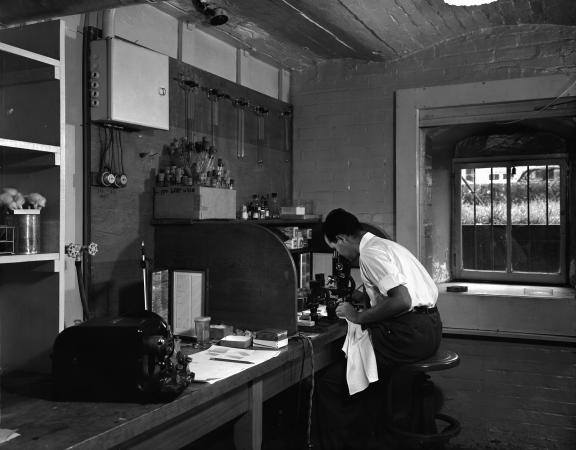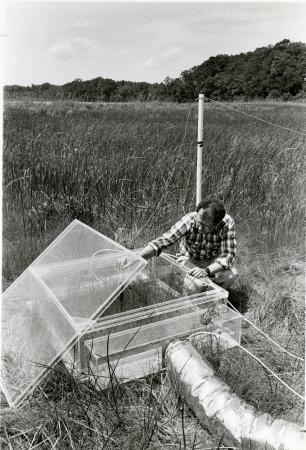Today is the anniversary of the 1965 founding of the Smithsonian Radiation Biology Laboratory (SRBL), the work of which later became an integral part of today’s Smithsonian Environmental Research Center. SRBL’s main purpose was to conduct research on how solar radiation (i.e. sunlight) affects living organisms, mainly plants. However, the history of this type of research at the Smithsonian is complex and involved multiple internal organizations during different time periods.

A comprehensive history of the Smithsonian Radiation Biology Laboratory begins decades earlier in May 1929, when then Secretary of the Smithsonian Charles G. Abbot established the Division of Radiation and Organisms to investigate how solar radiation affects the development of living things. The Division’s work was originally conducted in the basement of the Smithsonian Institution Building, often known as the Castle. In 1941 administrative control of the Division was given to the Smithsonian Astrophysical Observatory, which extended the use of buildings on the Castle’s South Yard for the Division’s research.

On this day in 1965, the Division was abolished, but its work continued under a newly formed independent entity: the Smithsonian Radiation Biology Laboratory. The facility’s research objectives expanded to not only include measuring how sunlight affects living organisms, but also conducting solar radiation measurements and carbon dating. In 1970, the SRBL moved to a new facility, the Parklawn Building, in Rockville, Maryland, a city just northwest of Washington, D.C.

Like SRBL, the Smithsonian’s Chesapeake Bay Center for Field Biology (later changed to the Chesapeake Bay Center for Environmental Studies) was also created in 1965 and was located along the Rhode River in Anne Arundel County, Maryland. Though originally established on land bequeathed to the Smithsonian Institution by a local dairy farmer, along with additional property purchased with grant funding, by 1969, the Center’s land holdings consisted of 933 acres of wetlands, forests, and marshes, including 14 miles of shoreline on the Chesapeake Bay. For four years, the Center had been administratively placed under the Smithsonian Office of Environmental Studies, but by 1973, the Center had become an independent bureau and reported directly to the Assistant Secretary for Science.

In 1983, the SRBL merged with the Chesapeake Bay Center for Environmental Studies to form the Smithsonian Environmental Research Center (SERC), which is located in Edgewater, Maryland. Originally SERC’s operations were conducted at two locations: the original SRBL laboratory in Rockville and the existing Bay Center facilities in Edgewater. The Rockville laboratory eventually closed in 1985-86, and operations and staff transferred to Edgewater. SERC continued to expand with new facilities such as the Philip D. Reed Education Center, Charles McC. Mathias Laboratory, meteorological tower, research wetlab, and other facilities for environmental research.

By combining the research topics of both the Bay Center and SRBL, SERC’s mission is to continue scientific research into the environmental challenges impacting the world today. SERC is also committed to educating young scientists, school children, and the general public about environmental science, and actively partners with community scientists to conduct ecological research. Today, SERC’s total land holdings encompasses 2,650 acres, and it supports staff, scientists, researchers, and students from across the United States to all over the world.
Related Collections
- Walter Shropshire Interviews, Record Unit 9597, Smithsonian Institution Archives
Related Resources
- “Smithsonian Environmental Research Center,” Smithsonian Institution Archives
- “About Us,” Smithsonian Environmental Research Center
- “History,” Smithsonian Environmental Research Center
Produced by the Smithsonian Institution Archives. For copyright questions, please see the Terms of Use.

Leave a Comment